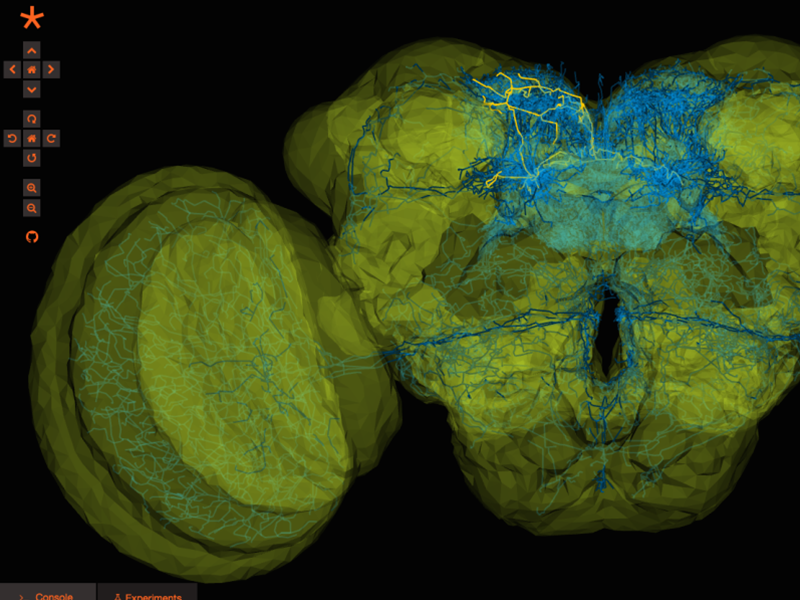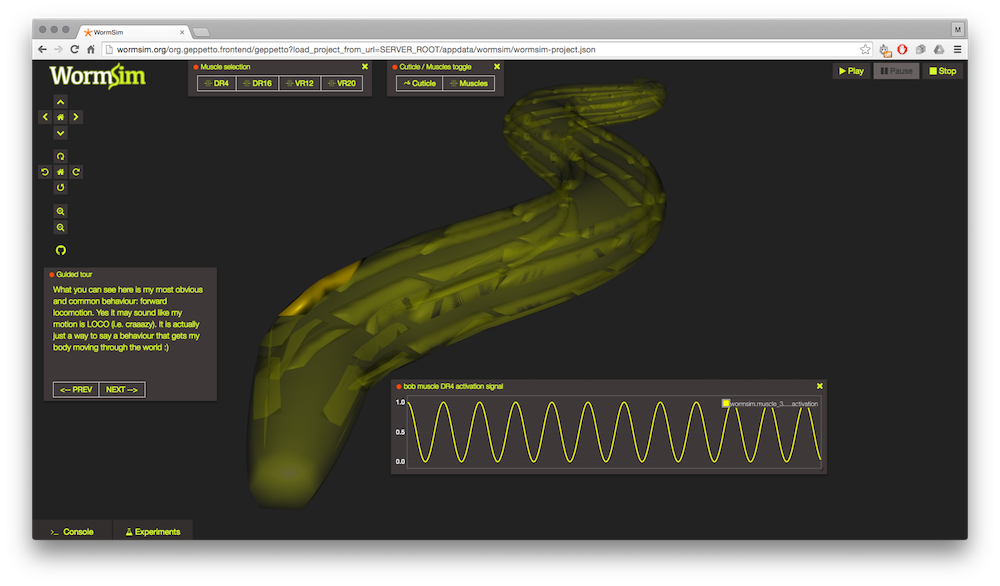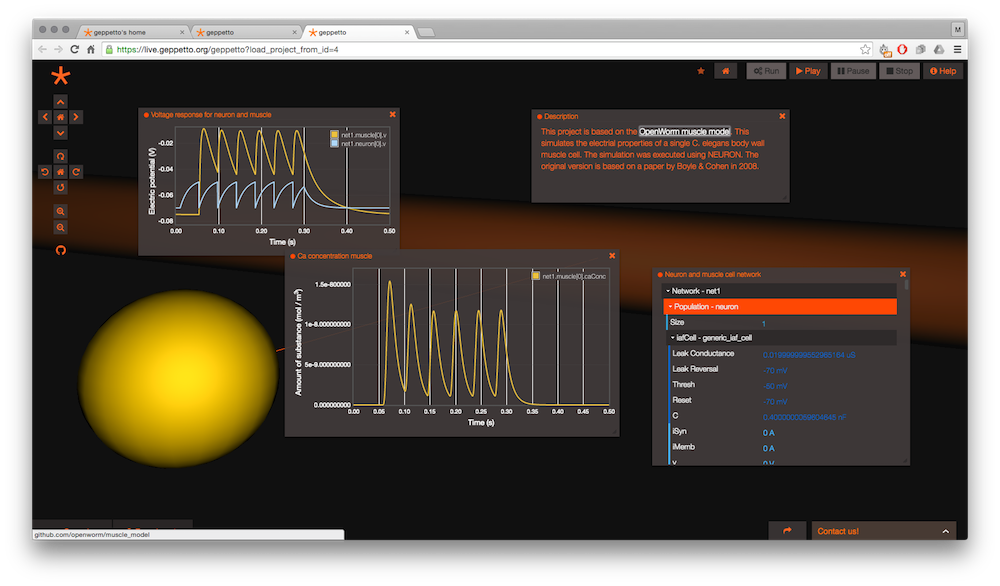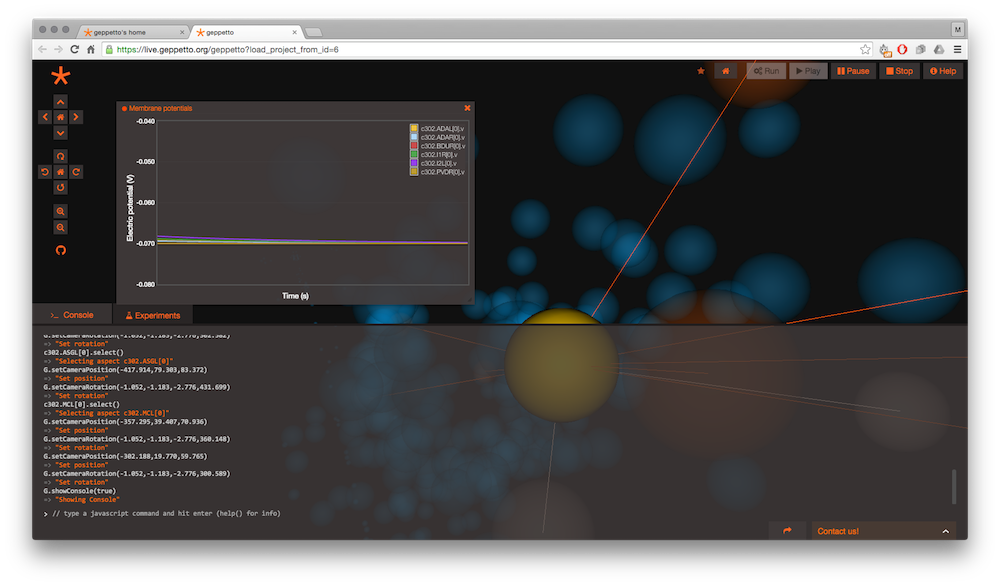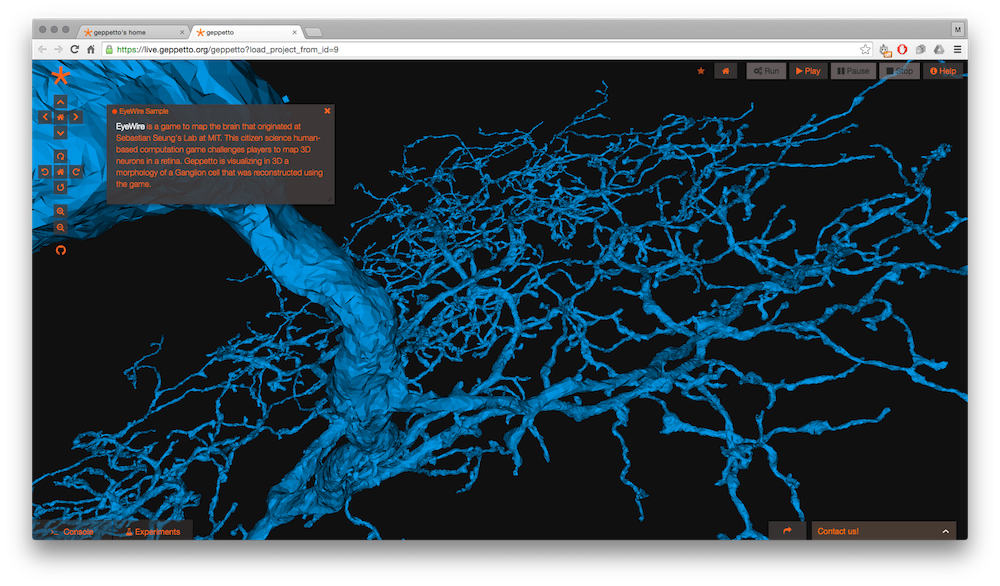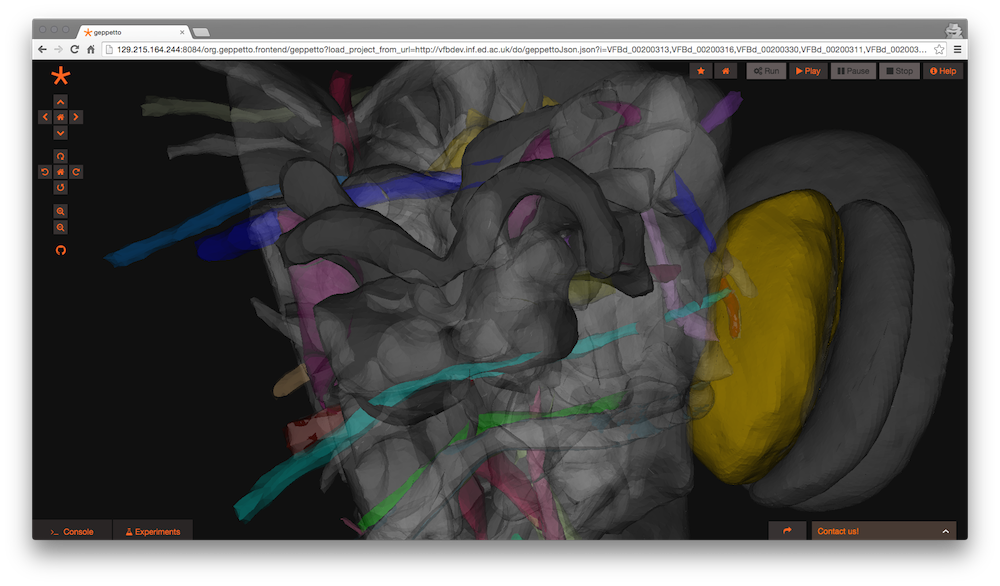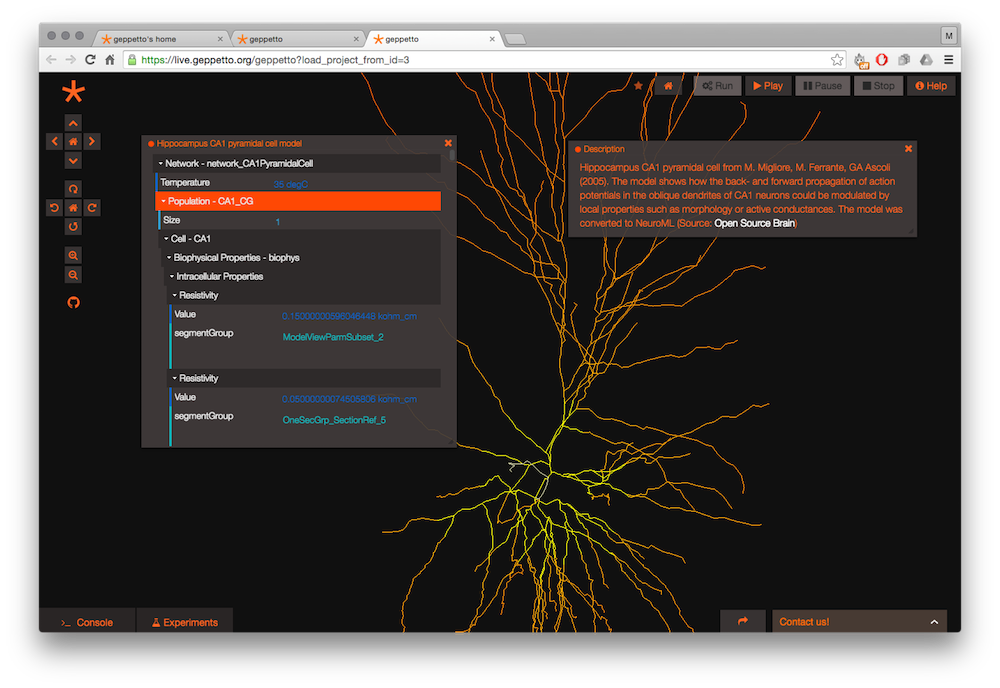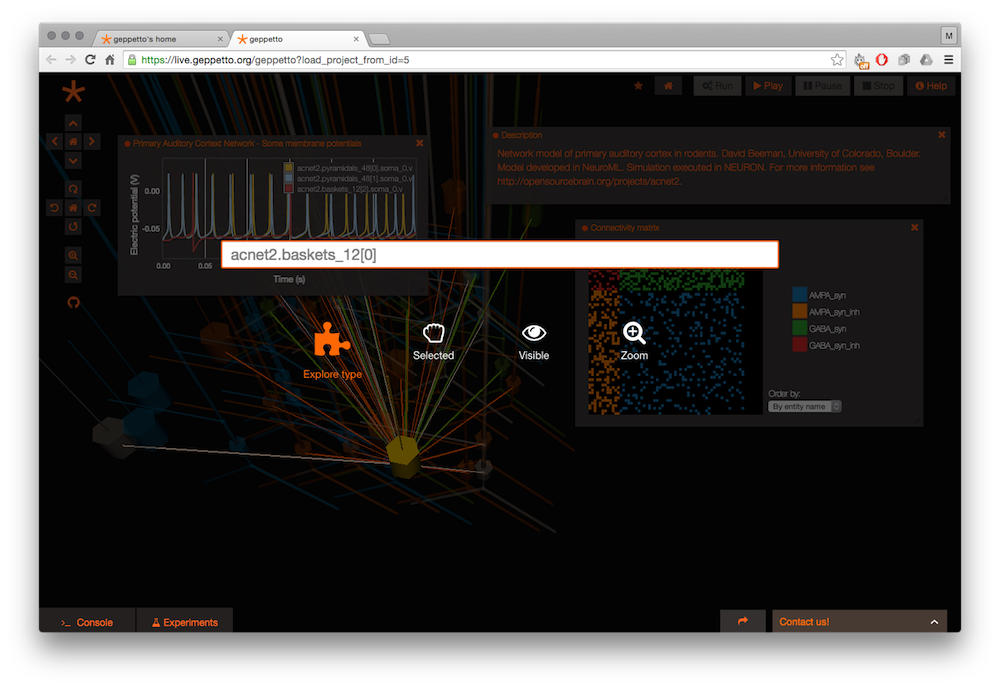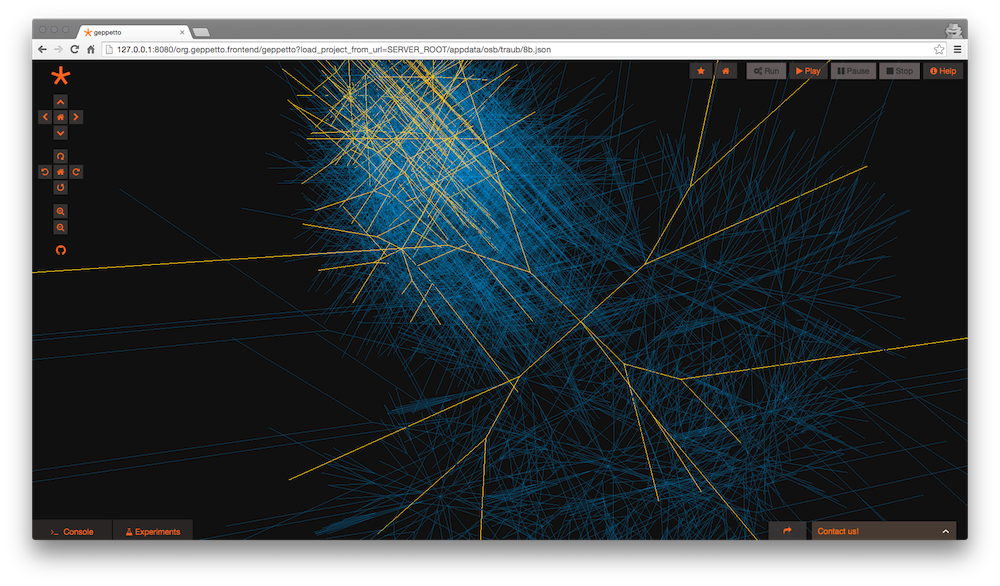Read our paper to learn more.
Besides the functional requirements, Geppetto's goal is to move away from the
monolithic approach to software that is usually found in academic programming projects.
Computational neuroscience has produced software systems, including NEURON and Genesis,
that are extremely useful for simulating systems of neurons that include biophysical
details (Brette et al, 2007). A range
of other algorithms have been devised in other areas of computational biology
(Barnes & Chu, 2010) for which simulators have
been produced
(Takahashi, 2004).
Several investigations have pointed to the challenges in building a single system that
integrates multiple simulation algorithms together into a single biological model
(Takahashi et al., 2002,
Dada and Mendes, 2007,
Cornelis et al., 2012).
Geppetto aims to address these scientific and engineering challenges.
Geppetto's design leverages cutting edge software technologies. Its architecture
and development follows industry standards.
